In this week's case discussion from Dr Terry Harvey, this 20x17mm pigmented lesion is present on...
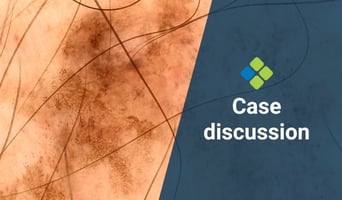
Learn how to surgically remove skin cancers from anatomically complex areas with optimal scarring results.
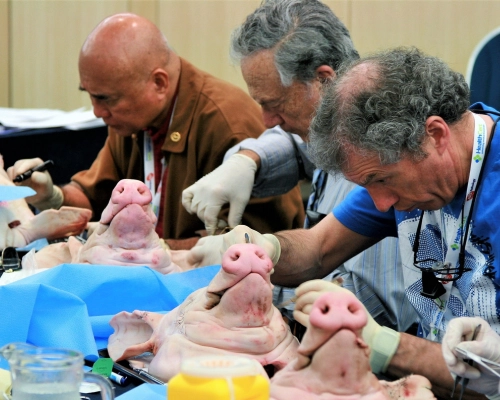
Learn a variety of flaps, grafts, and wedges for closure of defects on the head, neck, face, and upper and lower limbs.
- This course is perfect for advanced practitioners with prior training and experience.
- Learn a variety of surgical techniques to treat complex skin cancer cases in the primary care setting.
- This course is for medical doctors and International Medical Graduates.
- CPD-accredited and university-assured.
Fulfils 50 hrs for medical professionals in Australia*
100% online
Online + workshop
Fully online: $2495
Online + workshop: from $3395
Special rates available
70.5 hrs
Self-paced
2024
26 May in Melbourne
25 Aug in Brisbane
09 Nov in Perth
*provided an outcome measurement activity with a minimum of 5 hours is completed.
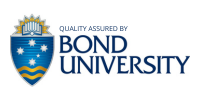
- Perfect your skills in elliptical excisions and various suturing techniques.
- Manage more complex cases with advancement flaps, rotation flaps, grafts, and rhomboid flaps.
- Master wound closure and reduce scarring with banner flaps and wedges of the ear.
- Confidently perform a variety of surgical procedures in-house and reduce referrals.
- Benefit from tips and tricks of experienced surgeons to perform procedures more efficiently.
Get unlimited access to all course content, additional learning materials, ongoing post-course support, and more.
*These topics are covered during the hands-on practical sessions in the optional skills workshop.
This module builds on the knowledge from the professional certificate and goes into further detail about defects, resting skin tension lines (RSTL) and excision, then looks at the closure and cosmetic considerations. Guides are included with the mathematical ratios.
Detailed information including schematics are provided for ellipses and variants of the standard ellipse. An overview of the vessels and nerves is presented in addition to the clinical considerations of RSTL.
Knot tying and suture techniques are reinforced and selecting the appropriate technique for closure are outlined. Detailed images of the different suture techniques are provided and then demonstrated on pork belly.
This module focusses on advancement flaps. Flaps require loose surrounding tissue to be successful. The principles, classification and types of skin flap surgery are outlined. Advancement flaps included are the ellipse, S-plasty, A-L, A-T, single and double advancement, modified H-flap and A-A-Z flap.
Each of these flaps is covered in detail including detailed schematics to assist with understanding the concepts. Each version of the advancement flap includes guides for RSTL and clinical images showing surgical planning for advancement flaps on the face. Recordings of planning and performing advancement flaps in both the clinical setting and on pork parts are included.
This module revises and builds on the rotation flaps introduction in the professional certificate. It commences with an overview of scalp defect closures and planning rotation flaps including images that describe the mathematic planning of rotation flaps including the size of the flap arc.
Clinical case examples are presented with planning and after surgery pictures to demonstrate best practice with the surgery and aesthetic outcomes. The traditional rotation and the O-Z flaps are described in detail.
Anatomical positions suitable for the rotation flap including the scalp, medial and lateral cheek, pre-auricular, temple and chin are included in this module. Recordings of planning and performing rotation flaps in both the clinical setting and on pork parts concludes this module.
Again, this module builds on the learning from the professional certificate. It begins with detail about defects, resting skin tension lines (RSTL) and excision, then summarisies the full thickness (FTSG) and split skin (SSG) grafts and the considerations to using these grafts for skin cancer surgery. Graft revasculation is covered.
Graft recipient and donor sites are outlined including visual images to demonstrate suitable areas. Selection of sites is critical to maximising successful outcomes.
The module teaches techniques and wound care of both the donor and recipient sites and describes how and why grafts can go wrong. Clinical images of surgical planning for grafts are included.
The halo variant of the split skin graft is featured including the technique, advantages, graphics and clinical images. Recordings of defatting and the planning and performing advancement flaps in both the clinical setting and on pork parts are included.
This module focusses on rhomboid flaps and opens with the Limburg flap, the easiest of the rhombic flaps. It describes identifying the defect then planning the surgery from the defect.
There are only four flap variants of the rhomboid flap however choices of design are apparent when planning is based from the donor site to maximise the success of the surgery.
Images of planning and designing a flap and the mathematics that support various rhomboid flaps are featured. Clinical images are featured to support the teaching and recordings in both the clinical setting and on pork parts are included.
Banner flaps are a form of transposition flap or rhomboid flap. It rotates about a pivot point however differs in its design from the rhomboid flap. Images of planning and designing a flap and the mathematics that support various rhomboid flaps are featured.
Associated problems and tips to successfully complete a banner flap are discussed. Clinical images are featured to support the teaching and a clinical recording of the banner flap to the ear is included.
Wedges on the ear are the focus of this module. Ear subunits are detailed as an awareness of these is essential for successful surgery. Practical information and techniques are included when planning an ear wedge together with suggested sutures.
Clinical images are featured to support the teaching and a clinical recording of the wedge procedure to the ear is included.
This module summarises the tips and tricks linked to the procedures taught in this course to maximise skin cancer surgery outcomes. These tips and tricks offer helpful information when planning skin cancer surgery.
The module commences with images of the cosmetic subunits, as where possible, skin cancer surgery procedures should remain in the same or adjacent subunits to maximise the best cosmetic healing. Clinical and graphical images are featured to support the teaching. Options for ear repairs are listed.
The module stresses the importance of patient history and how some patient conditions may impact skin cancer surgery procedures. Tips include how to set the ambience to relax both the doctor and patient and the importance of keeping comprehensive patient records including photos.
Local anaesthetic, syringes/needle size and scar care are mentioned. Sutures are covered including what sutures to use for what wounds. Planning skin cancer surgery on dual lesions, rhomboid, flaps and grafts are also summarised. Points of skin cancer surgery wisdom are listed along with anticoagulation issues.
If you're not interested in pursuing a full certificate in this field but simply want to enhance your skills in specific topics covered in this course, you can access the content of this and other courses for a flat fee of $83 per month (paid annually) within HealthCert 365.
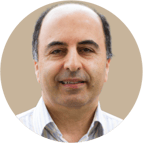
Senior Lecturer, The University of Queensland
Director at Newcastle Skin Check, Charlestown NSW
Dr Anthony Azzi graduated from the University of Sydney in 1989 and moved to Newcastle, where he spent the next 13 years working in the public hospital system. He now works in private practice as a Skin Cancer Doctor and Assistant Surgeon.
He completed a Master of Medicine in Skin Cancer from The University of Queensland, where he is now a Senior Lecturer. He is a member of the Australian Medical Association, Skin Cancer College Australasia, and the Australian College of Rural and Remote Medicine.
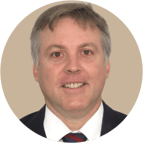
Senior Lecturer, The University of Queensland
Doctor, Newcastle Skin Check, Charlestown NSW
Dr Alister Lilleyman graduated from the University of Western Australia in 1994 and spent the next six years working in the public hospital system. After moving to Newcastle in 2003, he began working in private practice as a Skin Cancer Doctor, Assistant Surgeon, and Vein and Laser Physician.
He completed a Master of Medicine degree in Skin Cancer Medicine from The University of Queensland, where he is now a Senior Lecturer. He is a proud member of the AMA (Australian Medical Association), College of Phlebology, and Fellow of the Skin Cancer College Australasia.
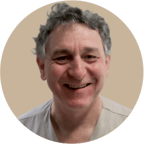
Dr Victor Harling obtained his medical degrees from The University of Queensland in 1983. He worked for Queensland Health and the Wesley Emergency Centre for many years before pursuing his interest in Skin Cancer Medicine.
Victor undertakes regular professional development courses and has obtained a Diploma of Skin Cancer from the Skin Cancer College Australasia. He is passionate about skin cancer medicine and surgery, and shares his vast expertise with fellow GPs in HealthCert certificate course and Clinical Attachments at the Redcliffe Skin Cancer Centre.

Study at your own pace and to your own schedule.
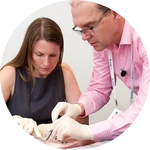
Complete your course online and receive all the benefits of online study, then put theory into practice at a small-group workshop.

Easily meet your CPD requirements and gain valuable skills – all in one place for $83 per month.
from $2495
*provided an outcome measurement activity with a minimum of 5 hours is completed.
Bundle two courses and save 5%, or three courses and save 10% upon enrolment.
Talk to us about deferred payment options, registrar scholarships and special rates.
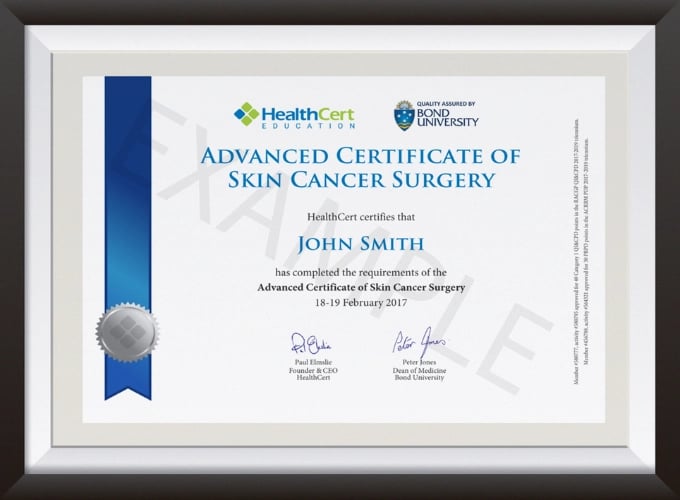

Absolutely worthwhile for taking skin cancer seriously. The course has been a lot of help in the last years, so thank you!
Dr A. Chiang
I went into the workshop expecting to improve my surgical skills, but was pleasantly surprised to learn much more. Advice regarding practice organisation, equipment and medico-legal recommendations was supplied. The surgical instructors were approachable, friendly and very helpful. I have also found the follow-up material available from the instructors to be easily accessible and informative.
Dr R. Barrett
A must-do if you're doing skin cancer surgery in practice. Lots of tips and skills.
Dr R. Adendorff
I was amazed to be able to apply what I learned in the Advanced Certificate of Skin Cancer Surgery course. I've found that my knowledge, skill and ability have accelerated since doing the course and it is eminently applicable. It has been worthwhile following through with what I learned in the course, and the education pathway has a multiplier effect on my knowledge and skill. A good example to other education providers!
Dr J. Ninio
This has been a refreshing and positive learning experience. Well organised and extremely well presented by very experienced teachers. It has increased my skills, confidence and motivation. Thank you.
Dr N. Rohde
| RACGP Activity Number | ACRRM Activity Number | Activity Title | Education Hours | Performance Hours | Outcome Hours | Total Hours | ||
|---|---|---|---|---|---|---|---|---|
| 404740 | 28470 | The Rhomboid flap | 404740 | 28470 | 3.5 | 5 | 0 | 8.5 |
| 404727 | 28466 | Rotation flaps | 404727 | 28466 | 4 | 5 | 0 | 9 |
| 404746 | 28486 | Wedges of the ear | 404746 | 28486 | 3.5 | 5 | 0 | 8.5 |
| 404750 | 28488 | Tips and Tricks | 404750 | 28488 | 4 | 5 | 0 | 9 |
| 404744 | 28472 | The Banner flap | 404744 | 28472 | 3.5 | 5 | 0 | 8.5 |
| 404732 | 28468 | Grafts | 404732 | 28468 | 4 | 5 | 0 | 9 |
| 404723 | 28462 | Advancement flaps | 404723 | 28462 | 4 | 5 | 0 | 9 |
| 404717 | 28457 | Ellipses and suture techniques revisited | 404717 | 28457 | 4 | 5 | 0 | 9 |
| 809202 | 32976 | Ellipses and suture techniques Outcome Improvement Activity | 809202 | 32976 | 0 | 0 | 8.5 | 8.5 |
| Grand Total | 79 | |||||||
The optional Advanced Skin Cancer Surgery Practical Workshop is accredited for 8.5 CPD hours total.
Education hours: 1
Performance hours: 7.5
Outcome measurement activities are not a requirement of our professional and advanced certificates. You may use an optional HealthCert outcome measurement activity or develop your own.
HealthCert provides several options to meet your outcome measurement hours requirement. These options are self-submitted activities and hours may vary depending on your focus area.
The purpose of outcome measurement activities is to improve your clinical confidence in managing an identified learning gap. The outcome improvement activities are designed to examine current clinical care, align clinical practice with best practice standards and identify opportunities for improvement.
The Advanced Certificate of Skin Cancer Surgery is ideal for doctors with a special interest in skin cancer medicine and who wish to treat more complex skin cancer cases. Participants can expect to reduce their referral rates as they gain invaluable experience that enables them to do more skin-related surgery in day-to-day work.
The course is suitable for Medical Doctors and International Medical Graduates. Participants must have completed the Professional Certificate of Skin Cancer Surgery (or a qualification deemed equivalent). It is recommended that 100 cases of skin cancer surgery have been completed before enrolling in the Advanced Certificate of Skin Cancer Surgery.
Participants do not have to pass an IELTS test but, as the courses are delivered in English, proficiency in listening, reading and writing in English is assumed.
Participants will require access to a computer/laptop, an internet connection and a basic level of technology proficiency to access and navigate the online learning portal.
Professionally accredited qualifications and prior studies may be recognised for entry into this course. Please send an email to credit@healthcert.com for an individual assessment of your prior qualifications and experience. This email should contain information about your educational history and work experience that specifically pertain to the content and procedures covered in the Professional Certificate of Skin Cancer Surgery. Please include any applicable certificates and course outlines from previous education. The relevant Course Chair will make a determination on your application within two to three weeks.
Recognition of Prior Learning is granted for those who have completed the RACGP Certificate of Primary Care Dermatology DermCert4 and face-to-face workshop.
This certificate course meets the minimum 50 hours CPD annual requirement across all three mandatory CPD activity types, provided an outcome measurement activity with a minimum of five hours is completed. You may use an optional HealthCert outcome measurement activity or develop your own.
Outcome measurement activities are not a requirement of Professional or Advanced Certificates.
Upon successful completion of the course requirements, course participants will receive the Advanced Certificate of Skin Cancer Surgery certificate.
Participants who choose to complete the online course components only will receive the Advanced Certificate of Skin Cancer Surgery Principles.
To learn more about the delivery of certificates in Australia and overseas, please visit our FAQs.
Professional Diploma Pathway
This course is the second stage of the Professional Diploma pathway. The full pathway
RPL with The University of Queensland
Master of Medicine (Skin Cancer)
Doctors who complete the HealthCert Professional Diploma programs in Dermoscopy, Skin Cancer Medicine, and Skin Cancer Surgery will receive RPL for the units IMED7002 and IMED7011, which are high-level subjects in the Master of Medicine (Skin Cancer) at The University of Queensland. The Master of Medicine is open only to registered medical practitioners with at least two years' postgraduate experience. IMED7002 is also a part of the Graduate Certificate Medicine (Skin Cancer); if a student (with two years' postgraduate clinical experience) who isn’t a registered medical practitioner has completed the HealthCert Dermoscopy pathway and the UQ units IMED7001, IMED7003 and IMED7010, they can receive the Graduate Certificate. View The University of Queensland Master of Medicine (Skin Cancer) program.
Postgraduate Pathway with the University of Plymouth
The Postgraduate Diploma in Minor Surgery is studied through the Rila Institute of Health Sciences and awarded by the University of Plymouth (UK).
There are three modules in the Postgraduate Diploma. Medical professionals who successfully complete the HealthCert Professional Certificate of Skin Cancer Surgery, Advanced Certificate of Skin Cancer Surgery and Professional Diploma of Skin Cancer Surgery will be eligible to apply for Accreditation of Prior Certified Learning (APCL) for module 3.
The Postgraduate Diploma is mainly delivered online. No practical workshops will be required due to the APCL from the HealthCert qualifications. Overall there will be a time saving of 40 per cent of the postgraduate program due to the APCL. Exams will be held in Perth, Western Australia.
When the Postgraduate Diploma has been successfully completed, doctors can apply for credit from the Postgraduate Diploma to the Master of Science in the Specialism awarded by the University of Plymouth.
Certified Clinical Attachments Pathway
Clinical attachments are optional and available on a 1:1 or small group basis. These provide the opportunity to observe skin cancer surgery and ask questions of the expert performing the procedures. In addition to clinical attachments in Australia, university teaching hospitals at the University of Lyon and the University of Vienna are available for clinical attachments. HealthCert certificates and university statements are awarded for participating in clinical attachments.
The dominant areas of study covered by The Université Claude Bernard Lyon 1 are science and medicine. Attached to the university are the "Hospices civils de Lyon" including the "Centre Hospitalier Lyon Sud", which is the largest teaching hospital in the Rhône-Alpes region and second largest in France. Out of the 2,630 faculty, 700 are also medical practitioners at local teaching hospitals.
The Medical University of Vienna is the largest medical
This organisation is an RACGP-accredited CPD provider under the RACGP CPD Program.
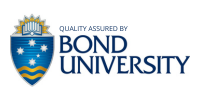
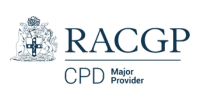
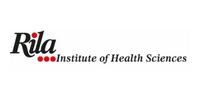
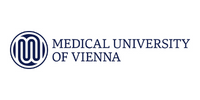
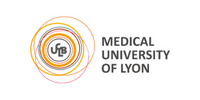

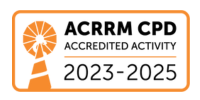
Don't see your question? Explore other faqs or talk to us.
Fees will vary based on the program and study option selected (fully online vs online + optional practical workshop). Payments can be made upfront or in monthly instalments. Special rates and various payment options are available. GP registrars and doctors in training enjoy a scholarship of up to $500. Talk to us to learn more.
Completion of any HealthCert course or attendance at an event will enable you to access the HealthCert Alumni Program which includes:
HealthCert Education is pleased to issue digital credentials for alumni. Digital credentials are a permanent online record of your successful completion of a HealthCert course and are issued to all course participants in addition to PDF certificates. If you are based in Australia, you also have the option to order a hard copy of your digital certificate for a small additional fee.
The recommended study duration of this certificate course is 70.5 hours, which includes study of the pre-course activities and readings, online lectures, live tutorials, and online assessment. This self-paced course offers the flexibility of 100% online study in your own time, at your own pace, in your own home or office, with no mandatory face-to-face requirements. You are not required to be online at specific times but can view and replay video lectures at your convenience.
All HealthCert courses meet World Federation of Medical Education standards. This certificate course qualifies for CPD hours from the Royal Australian College of General Practitioners (RACGP) and the Australian College of Rural and Remote Medicine (ACRRM) in Australia. It is recognised by the Royal New Zealand College of General Practitioners (RNZCGP) in New Zealand. It is recognised by the Hong Kong College of Family Physicians (HKCFP) in China. It is a self-submitted activity in Dubai and the United Kingdom. It is a self-submitted activity through the College of Family Physicians in Canada. If you live or work outside one of the above-mentioned countries, please contact us on admin@healthcert.com to discuss whether this course can be recognised in your country.
Want to stay up-to-date with the latest case studies, podcasts, free video tutorials and medical research articles pertinent to primary care?
Our Education Advisors can assist you with any queries and tailor our education pathway to suit your current expertise, interests and career goals.